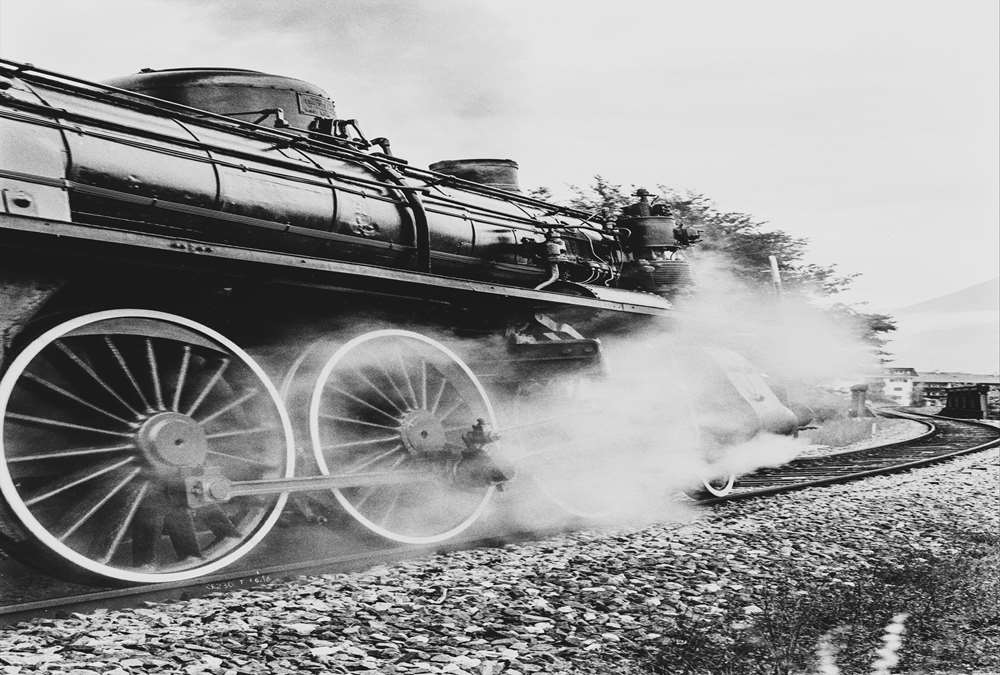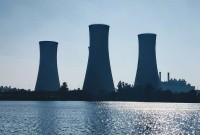- Home
- Business Processes
- Industry Knowledge
- Aerospace Industry
- Automotive Industry
- Banking Domain
- BFSI Industry
- Consumer/ FMCG Industry
- Chemicals Industry
- Engineering & Construction
- Energy Industry
- Education Domain
- Finance Domain
- Hospitality Domain
- Healthcare Industry
- Insurance Domain
- Retail Industry
- Travel and Tourism Domain
- Telecom Industry
- Leadership Skills
- eLearning
- Home
- Industry Knowledge
- Energy Industry
- The Fossil Fuel Industries
The Fossil Fuel Industries
These industries include petroleum industries (oil companies, petroleum refiners, fuel transport and end-user sales at gas stations) coal industries (extraction and processing), and the natural gas industries (natural gas extraction, and coal gas manufacture, as well as distribution and sales). Most of the energy we use today is being obtained from coal and petroleum. We also have nuclear power plants. But these energy sources are limited as only finite quantities of coal; petroleum and gas exist underground or in oceans.
The present reserves of coal and petroleum, if consumed at the current rate, maybe exhausted after a certain period. Power generation can be fueled by coal or natural gas. The pulverized coal and fluidized bed coal combustion are used for steam generation in the Rankine cycle; natural gas is used in gas turbines for power generation in the Brayton cycle.
Energy Industry – Rise of Coal as Fuel of Choice
Coal is one of the world’s most abundant fossil fuels. It is also widely distributed, and many countries with little or no petroleum reserves have coal resources. Documented coal use dates back to the 1700s when coal was used as a heating fuel, but historical evidence indicates that coal was used in 100–200 AD by the Romans during their occupation of England. Until about the 18th century, cooking took place in an open hearth with firewood as fuel. Hearth cooking was hard work and messy; trees had to be chopped into firewood and brought indoors and large amounts of fine-sized ash had to be hauled outdoors. Coal was a welcome relief because its high heating value per unit mass (7000–13,000 Btu/lb) compared to wood meant that less fuel was needed.
The Industrial Revolution of the 18th and 19th centuries greatly expanded the use of coal as a fuel to run the new industries, particularly for the manufacture of iron products. Prior to the Industrial Revolution, wood charcoal, or char, was the source of heat in industrial hearths. Wood char provided more heat compared to wood, but even so, char hearths rarely produced enough heat to melt iron. Instead, these hearths could only heat iron until it became sufficiently malleable to be hammered into shapes, yielding wrought-iron products. On the other hand, coal hearths provided enough heat to melt iron into its liquid form. Liquid iron could then be poured into special molds to manufacture cast-iron products—a faster way of producing iron goods. Coal hearths speeded operations in other heat-intensive industries, such as the smelting of iron ore in a blast furnace or the production of steel from pig iron. Regions where coal and iron ore were present together, for example, South Wales in England, flourished during the Industrial Revolution because of the abundance of both raw materials in one location.
Coal use today is no longer evocative of dirty power plants with polluting black smoke billowing from their smokestacks. Many of these plants have been transformed through technology to operate more efficiently and with significantly lower emissions. Some fire coal with other waste materials and others produce both electric power and heat. Cases of plant retrofits and their new performance statistics are documented by various institutions, including the Energy Information Administration.
Energy Industry – Advent of Steam Engines
The invention of the steam engine by James Watt in the late 1700s greatly expanded the market for coal, because it provided a method for converting the heat energy in coal into mechanical energy. The golden era of the railroads dawned in the early 1900s as coal-fired steam locomotives and steam wagons quickly replaced horse-drawn wagons and carriages. In the locomotive’s boiler, a coal fire heated water and converted it to steam. The energy in the steam moved back and forth a piston that was attached to the locomotive’s wheels, providing motive power. Coal fueled many forms of transport, from giant locomotives that hauled goods and passengers hundreds of miles across cities, to steam wagons and streetcars that transported the same cargo across a few city blocks. Compared with traveling on horseback or stagecoach, train travel was comfortable and fast—passengers relaxed in Pullman cars heated by pot-bellied stoves, dined on meals cooked over coal-fired stoves, and traveled in fast trains pulled by steam locomotives. Stationary coal-fired steam engines provided mechanical power to drive factory machinery through an elaborate system of pulleys. The availability of mechanical power led to the development of machine tools that rapidly increased industrial productivity.
Petroleum
Coal gas and petroleum energy share the property of having hydrocarbons as their principal constituents; coal gas is rich in the hydrocarbon methane, whereas petroleum consists of a complex mixture of liquid hydrocarbons. The use of petroleum products long antedates the use of coal gas. In Mesopotamia, concentrations of petroleum deposits provided commerce and production. Babylonians called inflammable oil ‘‘naphtha.’’ For thousands of years, mixtures containing bitumen were used in roads, ship caulking, floor waterproofing, hard mortar, and medicines.
During the early 19th century, deep exploratory drilling for water and salt required sufficiently hard drills and mechanical power. Steam engines provided the energy, and the development of derricks aided in the manipulation of rapid-drilling machines. Prospecting for oil ceased to be dependent on surface seepages when hollow drills enabled drill samples to be removed, revealing the structure of underground formations. The compositions of crude oil varied; thus, methods of oil refinery were important. During the 1860s, the United States had a steady supply of 10 million barrels of petroleum annually. By 1901, Russian crude oil output reached 11 million tons, and petroleum-fueled railways connected world markets.
Kerosene was distilled from petroleum with sulfuric acid and lime, providing inexpensive and plentiful fuel for lamplight. Although gasoline remained a worthless and inflammable by-product of the industry, oil derivatives provided lubricants that became increasingly necessary with innovations in vehicles and machinery, and heavy machine oils were used on railways.
Natural Gas
Natural gas is a vital fuel for modern society. During the last 50 years of the 20th century, natural gas satisfied approximately 25% of U.S. energy demand. It has been used for electric power generation, industrial heat processes, domestic heating and cooking, and transportation fuel. Natural gas is composed primarily of methane, a hydrocarbon consisting of one carbon atom and four hydrogen atoms (CH4). As a ‘‘fossil fuel,’’ natural gas is rarely pure. It is commonly associated with petroleum and often contains other hydrocarbons, including butane, ethane, and propane. In the United States, substantial natural gas utilization did not begin until after the discovery of large quantities of both crude oil and natural gas in western Pennsylvania during 1859.
Natural gas has come a long way as a good with intrinsic value. These resources were once considered a mere by-product of oil and thus not worth the significant capital investment required to find, gathers, treat, transport, and distribute it. The relative abundance, wide dispersion, and cleanliness of natural gas have propelled it to the forefront of the fossil fuels so that natural gas today is poised to become a global commodity, a bridge fuel to the next energy future, and a source of molecular building blocks to new materials.
Oil & Gas Industry
Oil price shocks have figured prominently in U.S. business cycles since the end of World War II, although the relationship seemed to weaken during the 1990s. In addition, the economy appears to respond asymmetrically to oil price shocks; increasing oil prices hurt economic activity more than decreasing oil prices to help it. Oil price shocks to aggregate economic activity and oil price shocks create business cycles and seem to have a disproportionate effect on economic activity.
Clean Coal Technology
Clean coal technologies can have a major impact on the world’s economy by allowing the continued use of coal in an environmentally acceptable manner, thus reducing dependence on more expensive petroleum and natural gas, while avoiding economic problems caused by natural gas price fluctuations.
Although natural gas is expected to fuel many new power plants and industrial facilities to meet growing demand over the next two decades, it is critical to maintaining fuel flexibility, thus enabling the use of low-cost indigenous fuels, such as coal.
Unfortunately, in addition to carbon and hydrogen, most coals contain sulfur, nitrogen, minerals, and chlorine, in various concentrations. Coals also contain trace elements, such as mercury, lead, arsenic, cadmium, selenium, thorium, and uranium, in very small concentrations, generally only a few parts per million. When coal is burned, the trace elements may be released to the environment in various, sometimes harmful, forms. In the past, coal combustion has contributed to acid rain, smog, forest die-off, eutrophication of lakes, and other environmental problems. Because such impacts are no longer acceptable, new methods to reduce harmful emissions from plants utilizing coal are needed. Technology to accomplish this is generally referred to as clean coal technology (CCT).
Since the shift to fossil fuels began in earnest more than 150 years ago, it may take a century or more to complete the next industrial revolution. A 2% annual reduction in carbon dioxide and methane emissions will lead to a net reduction in greenhouse gases necessary to stabilize gas concentrations during this century. It will require multiple policies and measures designed to deliver energy services in new ways if the world is to meet this reduction and avoid a dangerous increase in carbon monoxide levels to 550 ppm.
Related Links
You May Also Like
-
Energy is essential to life and the key to human progress. Energy is the common link between the living and non-living realms of the universe, and thus provides an organizing intellectual theme for diverse disciplines. Energy growth is directly linked to well-being and prosperity across the globe. Meeting the growing demand for energy in a safe and environmentally responsible manner is a key challenge.
-
Most of the energy we use today is being obtained from coal and petroleum. There are some sources of energy, which can be used repeatedly without exhausting them, such as, energy from the sun, energy from a water-fall, wind energy, tidal energy. This industry comprises of alternative energy and sustainable energy companies, including those involved in hydroelectric power, wind power, and solar power generation, and the manufacture, distribution, and sale of alternative fuels.
-
These industries include petroleum industries (oil companies, petroleum refiners, fuel transport and end-user sales at gas stations) coal industries (extraction and processing), and the natural gas industries (natural gas extraction, and coal gas manufacture, as well as distribution and sales). Most of the energy we use today is being obtained from coal and petroleum. We also have nuclear power plants. But these energy sources are limited as only finite quantities of coal; petroleum and gas exist underground or in oceans.
-
The energy is comprised of companies involved in the exploration and development of oil or gas reserves, drilling, and refining and integrated power companies working on renewable and coal energy. This industry locates fuel resources, processes them, and finally involved in the production and sale of energy. Access to affordable energy is fundamental to human development, and economic growth as without electricity and power, human opportunities are significantly constrained.
-
The history of human culture can be viewed as the progressive development of new energy sources. Developments in the energy industry have resulted in unparalleled transformations of society. It is because of the availability of energy sources that humans have been able to increase comfort, longevity, and affluence, as well as their population apart from unprecedented growth. Each energy fuel alternative has also impacted different combinations of economic, political, technological, social, and environmental attributes.
-
The energy industry is going through the biggest transformation in history. The impact of energy production and consumption on the environment is varied and mankind has started understanding the importance of improving energy efficiency and ensuring energy security for all. The current trend is to explore sustainable energy options that can provide power to future generations.
-
The modern electric power industry covers the generation, transmission, distribution, and sale of electric power to the general public and industry. The commercial distribution of electric power started in 1882 when electricity was produced for electric lighting. In the 1880s and 1890s, growing economic and safety concerns lead to the regulation of the industry. What was once an expensive novelty limited to the most densely populated areas, reliable and economical electric power has become an essential aspect for normal operation of all elements of developed economies!
-
This is the traditional industry based on the collection and distribution of firewood, the use of which, for cooking and heating, is particularly common in poorer countries. People have needed energy in some form for their everyday lives for hundreds of years. Primitive man (about 1 million years B.C.) used fire to cook food and over the period of human development. The energy industry was probably born the day when our ancient ancestors first discovered that they could keep themselves warm and cook food with fire.
-
Nuclear power is the use of sustained nuclear fission to generate heat and electricity. Nuclear power plants provide about 6% of the world's energy and 13–14% of the world's electricity, with the U.S., France, and Japan together accounting for about 50% of nuclear-generated electricity. In 2007, the IAEA reported there were 439 nuclear power reactors in operation in the world, operating in 31 countries.
Explore Our Free Training Articles or
Sign Up to Start With Our eLearning Courses

About Us
Learning
© 2023 TechnoFunc, All Rights Reserved









